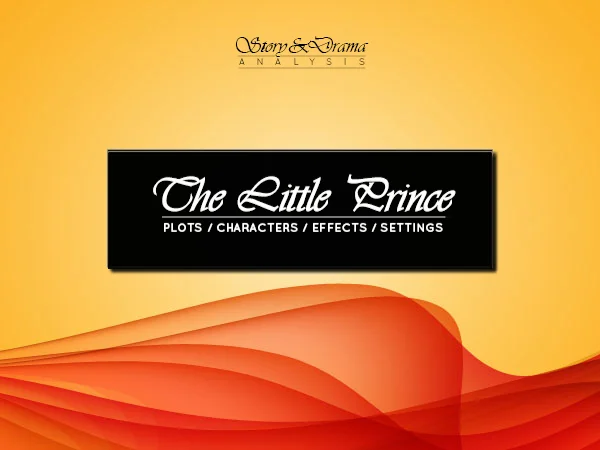 |
|
PDF, 75 pages
|
Here is our analysis of The Little Prince, the story for children that makes everybody cry. 175 million copies were sold around the world.
The Little Prince – Story analysis – Chapter VII – Matters of consequence
The fifth day, the little prince asks the narrator whether sheeps also eat flowers with thorns. The narrator confirms, and the little prince asks what are thorns made for. “The little prince never let go of a question, once he had asked it.” Busy fixing his engine, the airman gets irritated against a bold and angrily replies that “The thorns are of no use at all. Flowers have thorns just for spite!”, but the prince objects that the thorns must on the contrary be a touching technique of self-defence from the flowers, so fragile and vulnerable.
Structure: another short plot starts within the framing plot, but this time the two plots converge explicitly (i.e. the data of one disturbs the data of the other), and the tension that stayed implicit about the airman’s survival suddenly emerges at the surface, a dramatic effect which could not have been used if the narrator would not have willingly ignored this problem that has been growing during the 2 previous chapters.
Structure: the mini-plot’s Hero is the little prince, whose goal is to obtain answers, and the Antagonist is the airman, busy trying to solve his own plot.
Pattern repetition: first mention of this stubbornness of the little prince who does never renounce a question, while often forgetting himself to answer those he is asked, a stubbornness which will show many times along the book, and become one of the main thematic properties of this character.
The little prince wants to continue asking questions, but the airman gets angry, arguing that he is busy with matters of consequence (his own survival). The little prince gets angry too, and accuses the airman of speaking as the grown-ups, and he tells the anecdote of “a certain red-faced gentleman” who also pretended being busy with matters of consequence: “Is the warfare between the sheep and the flowers not important? Is this not of more consequence than a fat red-faced gentleman’s sums?” He then evokes for the first time “one flower which is unique in the world, which grows nowhere but on my planet”, and whose existence will be threatened by the sheep the airman drew.
Structure: the mini-plot enters in crisis.
Themes: this first conflict between the two main characters opposes two universes, two groups of themes in contrast: the human, mortal, trivial, terrestrial needs of the airman, and the spiritual, poetic, esthetic needs of the little prince.
The little prince starts crying. The airman abandons his tools, and understanding that this sadness is more important that his own distress, he consolates his young friend. He promises to draw a muzzle for the sheep or an armour for the flower…
Structure: the structure of characters gets modified (the airman, previously Antagonist, becomes a Helper of the Hero by consolating him for not having reached his goal) and the plot partly resolves, but only partly since the prince did not obtain an answer to his questions, so that his anxiety about his flower remains. In fact, this plot was useful to introduce the theme of the flower which will be the main topic in the next plot. Suspense!
Pattern repetition: it is thus the second time that this flower was mentionned, the first time by a simple allusion, and now by a much more consistant and emotional apparition.
…
Read our full analysis of The Little Prince, by Antoine de Saint-Exupery and improve your writing skills